| |
|
|
| |
When all else fails.
Wed 26th March, 2014
|
|
|
|
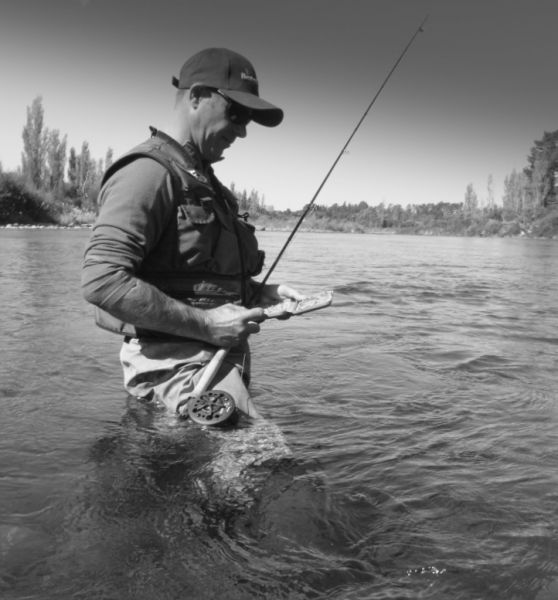 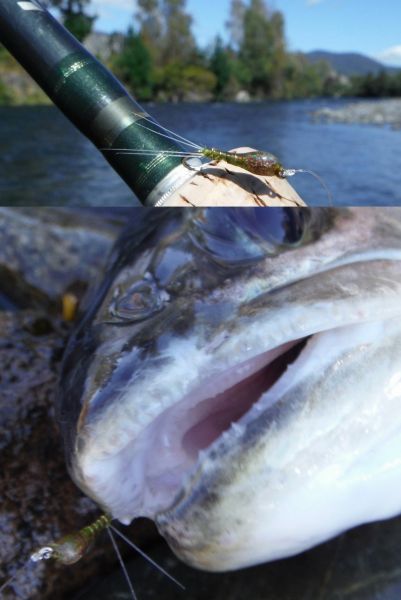 We all have patterns in our box that we dig out when the going gets tough. Flies that we feel a little more confident using because they've got us out of trouble in the past. We all have patterns in our box that we dig out when the going gets tough. Flies that we feel a little more confident using because they've got us out of trouble in the past.
One of my favorite go to patterns are epoxy nymphs.
I was fishing a spot the other day that had been particularly kind to me for about six weeks but this time none of the usual offerings were working. I'd been up and down the stretch a couple of times and normally would have moved on ... but ... as we know fishing is a funny ole game.
None of us will be around long enough to learn all there is to learn about it. But when you've been at a while some days you just get a gut feeling that its worth persevering ... that sort of sixth sense that I've mentioned before ... you don't know how you know ... you just do! So out came the "when all else fails box" and on went a kind of olivey brown epoxy nymph.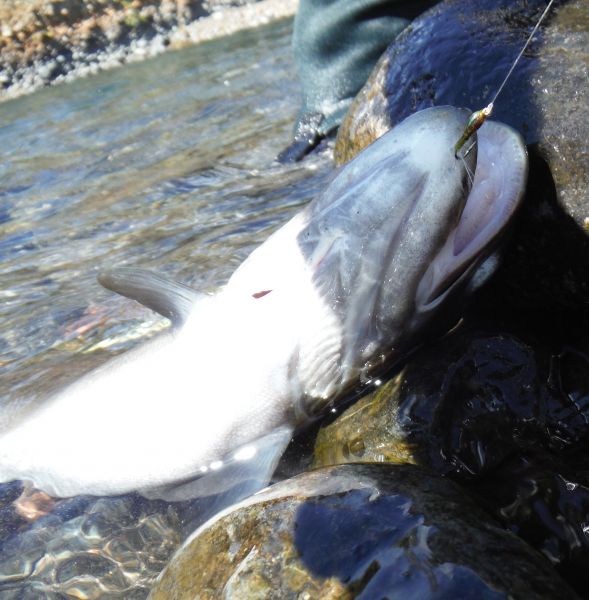 Second drift down the indicator dived under and over the next hour I pulled out another three on the same fly. All from a piece of water that earlier had seemed devoid of fish. Second drift down the indicator dived under and over the next hour I pulled out another three on the same fly. All from a piece of water that earlier had seemed devoid of fish.
Like every other fly in your box they don't work every time but there seem to be occasions when fish find them irresistible.
These nymphs are also really simple to tie using easily sourced materials ... tying thread, fine lead wire {optional}, a few fibers from a synthetic paint brush, wire rib, marker pens and of course the epoxy resin.
When "5 minute epoxy" first became popular with fly-tiers most anglers used a two part product that had to be mixed together to form the resin.
This consisted of the base material and a
" hardener " which when added to it began the self curing process.
It was messy and time consuming with a lot of wastage and as the name suggests once applied it took several minutes to cure.
But the cure times were notoriously unreliable and you always felt rushed when using it because you never knew if it was going to go off or not.
You also had to keep rotating the fly to prevent an unsightly "blobbing" effect.
Thankfully things have moved on a bit and fly tyers nowadays use light curing resins like those in the Solarez range www.trademe.co.nz.
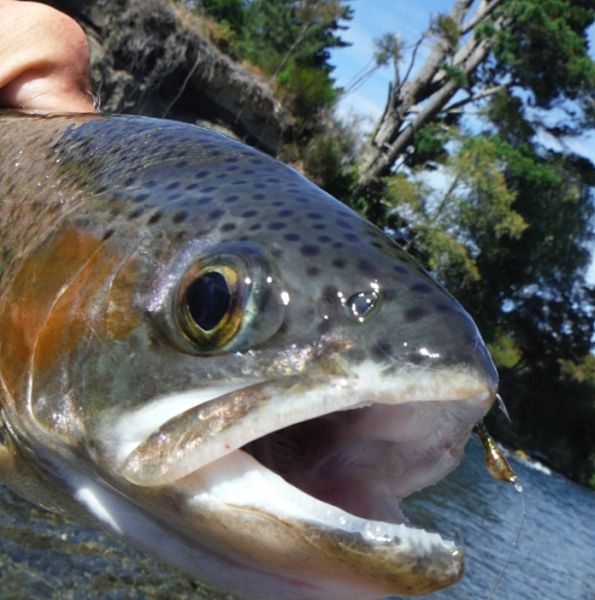 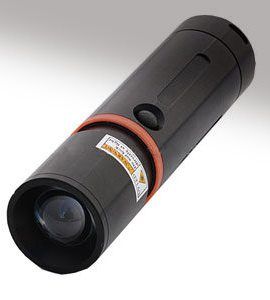 LCR's were first developed in the 1960's for use in dentistry and a few years later the first dental curing lights appeared which soon became a common sight in most dental practices. LCR's were first developed in the 1960's for use in dentistry and a few years later the first dental curing lights appeared which soon became a common sight in most dental practices.
These were the fore-runners of the battery powered UV torches available today.
Today's LCR products come in a range of viscosities with finer applicators, so no more fannying around mixing two part epoxy on bits of old card and applying it with a tooth-pick or plastic cocktail stick.
Now its easier than ever to give your creations that little bit of extra pizazz and durability. Just apply it to the fly and when you're happy with the look zap it with the torch and it cures in seconds.
Great for bombs and nymphs when you want a faster sink rate and a fly that doesn't fall apart after a couple of fish !
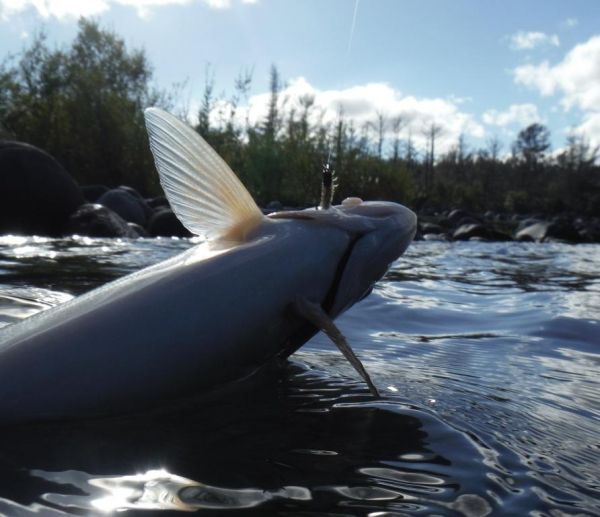
Ever since I was a nipper I've always loved fishing for trout and until my late teens spent most of my spare time fishing the small Welsh rivers near my home town.
These were club owned stretches that contained brown trout and a two pound fish was considered a specimen ... most of them were much smaller.
So this week when I began catching half pound juveniles from a shallow run on the upper river it reminded me of that previous fishing life and how lucky I am to now live in New Zealand.
I'm sure most anglers who fish the Tongariro would be pretty disappointed if all they ever caught were fish under a pound. Fortunately that isn't the case here but it was when I fished as a lad in Wales and for many overseas visitors its a similar story.
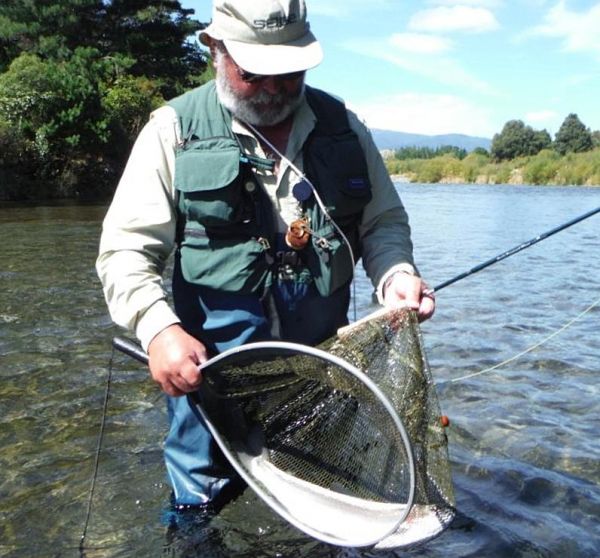 It isn't exactly cheap in other countries either. It isn't exactly cheap in other countries either.
I had this email from David Holden a retired surgeon who lives in the U.K.
We were talking about the cost of fishing when he fished the Tongariro recently and he sent me this when he arrived home.
" About the cost of fishing, when I got home I saw this advert in a magazine for river Test syndicate rods. Three rods, 3 named days per fortnight, £7,200 plus Vat per year. That works out at £2880 per rod per year. Let the NZ locals know how lucky they are. "
David.
Thats over five and a half thousand dollars for the privilege of fishing a few days every fortnight and you can't even fish when you want too ! 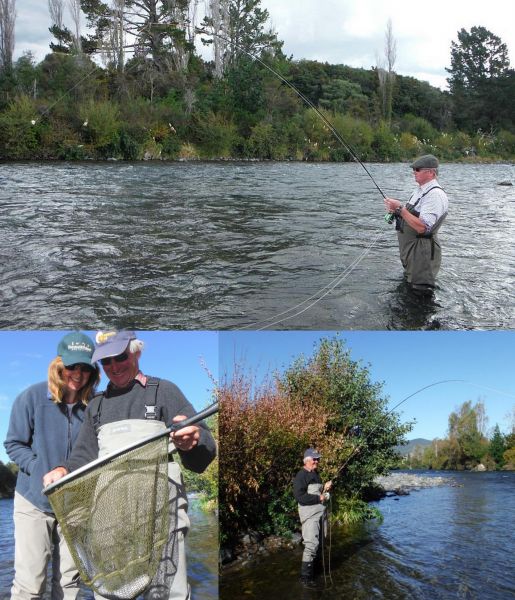
The fishing here has got a little tougher over the last couple of days and anglers all report the same thing ... lots of walking ... and Tongariro sardines with the odd better fish now and again just to keep you on your toes.
We could probably do with a good dump of rain just to shake things up a bit. But the outlook is for it to be drier than normal accompanied by cooler temperatures than usual for March.
Some mornings I've had to scrape a little bit of ice off the windscreen but despite the forecast its still pleasantly warm once the sun gets up.
The wind picked up again early yesterday and there were only a few brave souls on the river when Blue took me for a walk.
And talking of Blue I'll finish off with the latest pic of him taken on the river, especially for Inez and Charlotte in Australia.
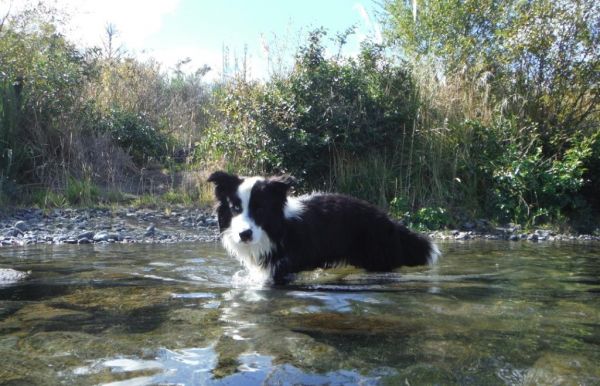
Its flat calm out there this morning with just a little bit of cloud ... perfect ... guess where I'm going.
Tight lines guys.
Mike
Update
I spoke too soon ... by the time I got on the river there was a brisk sou'wester blowing which is forecast to ease tomorrow. |
|
|
| Back to Top |
|
|
|
|
|
|
|